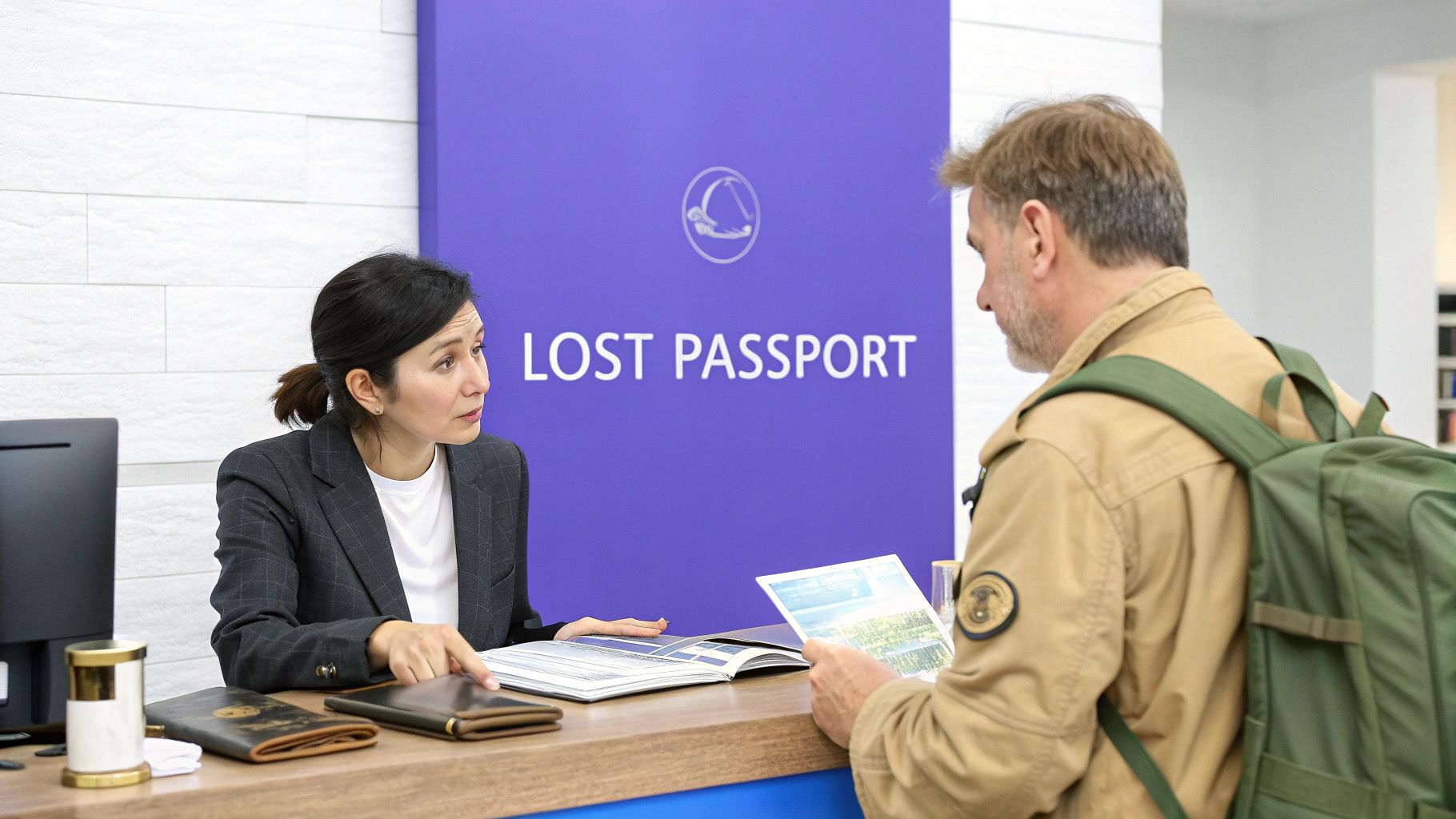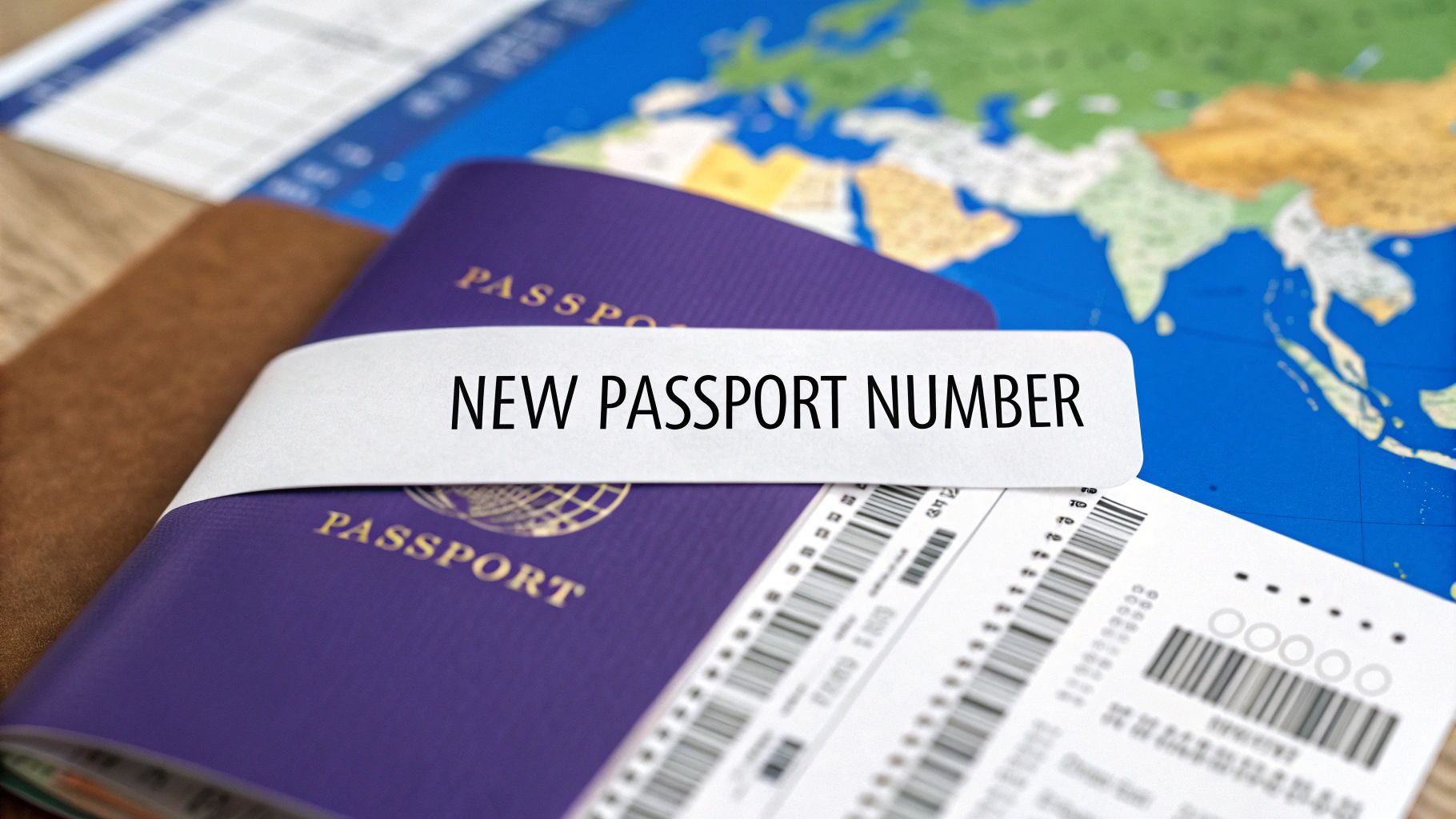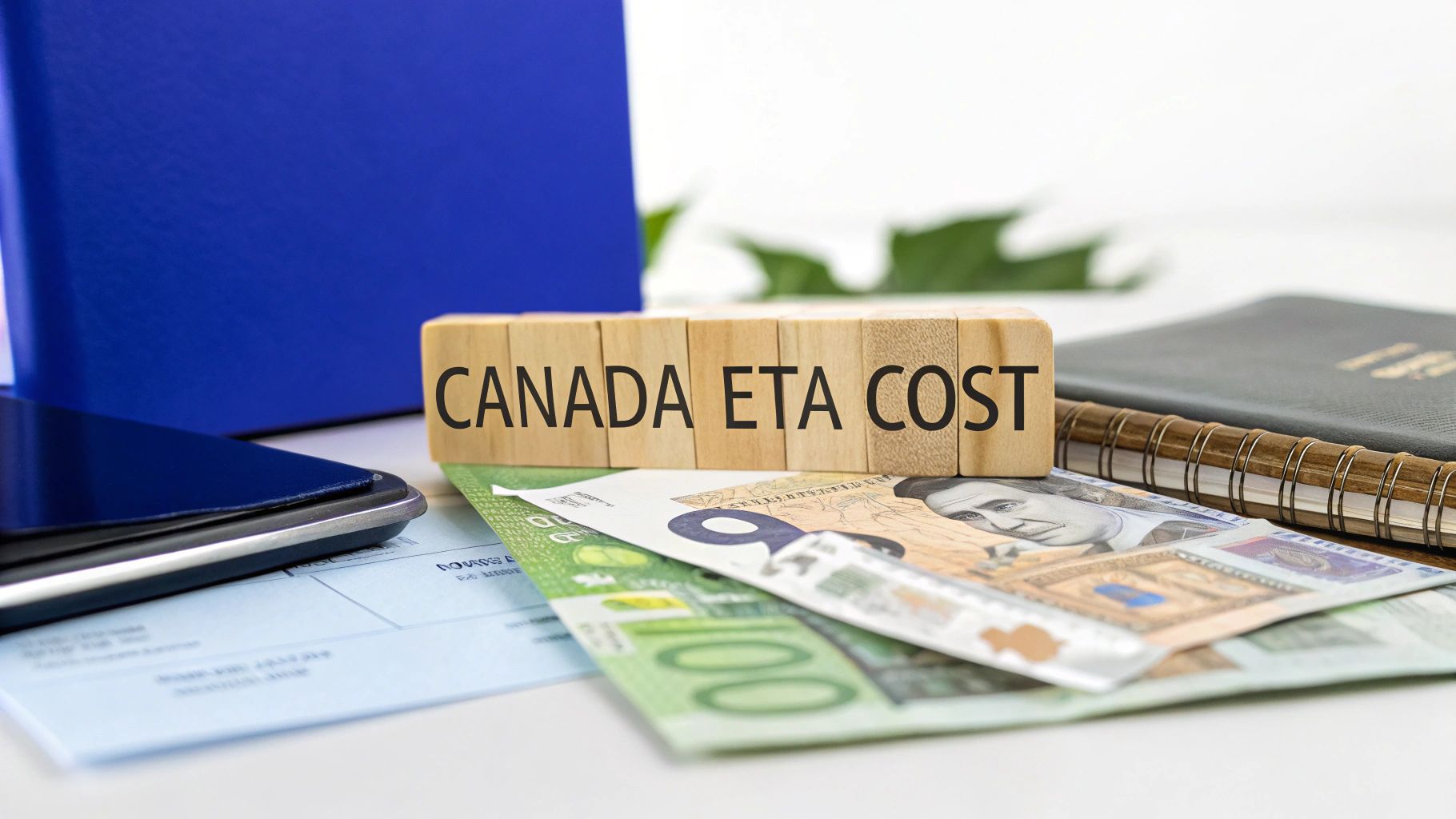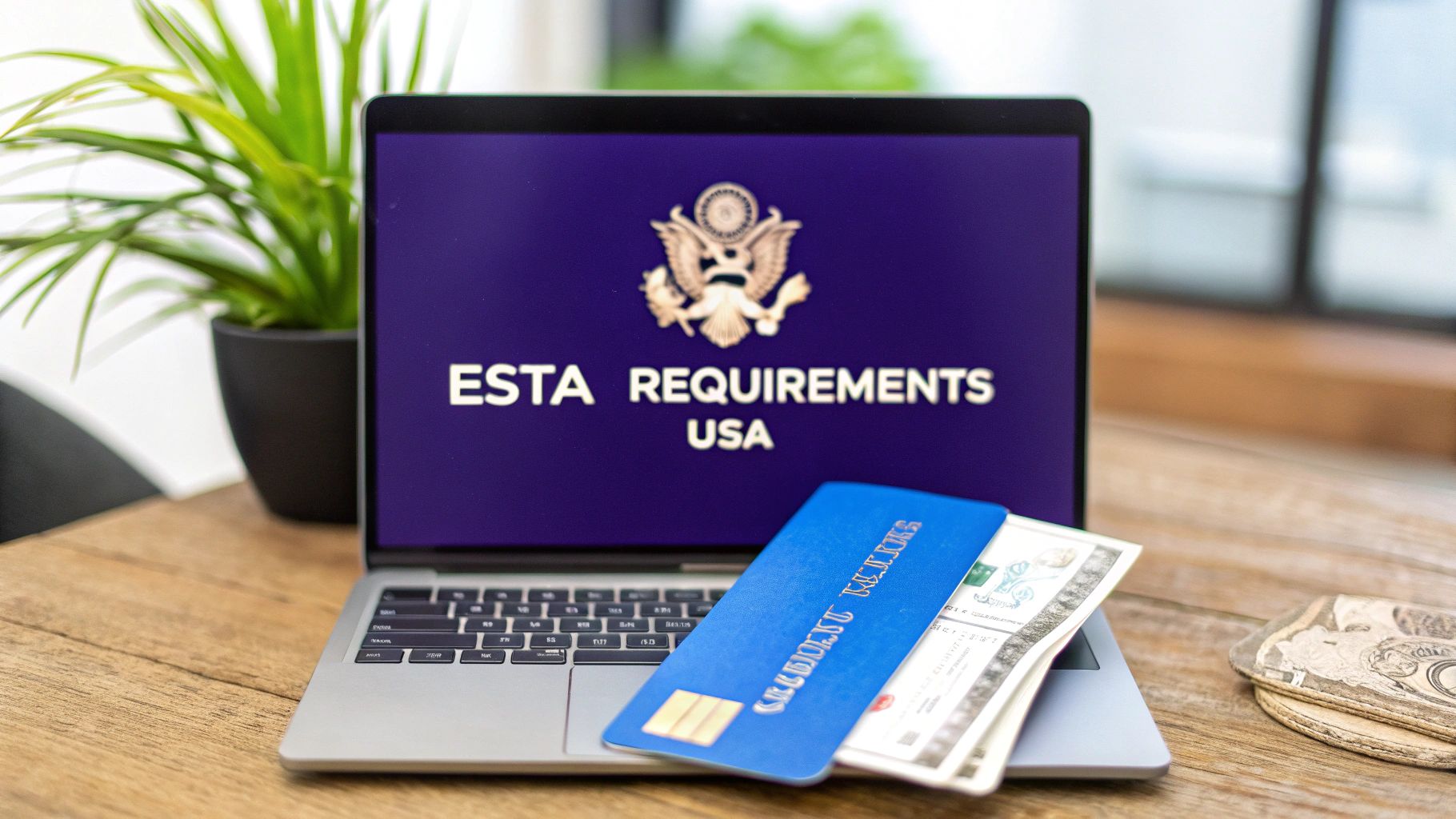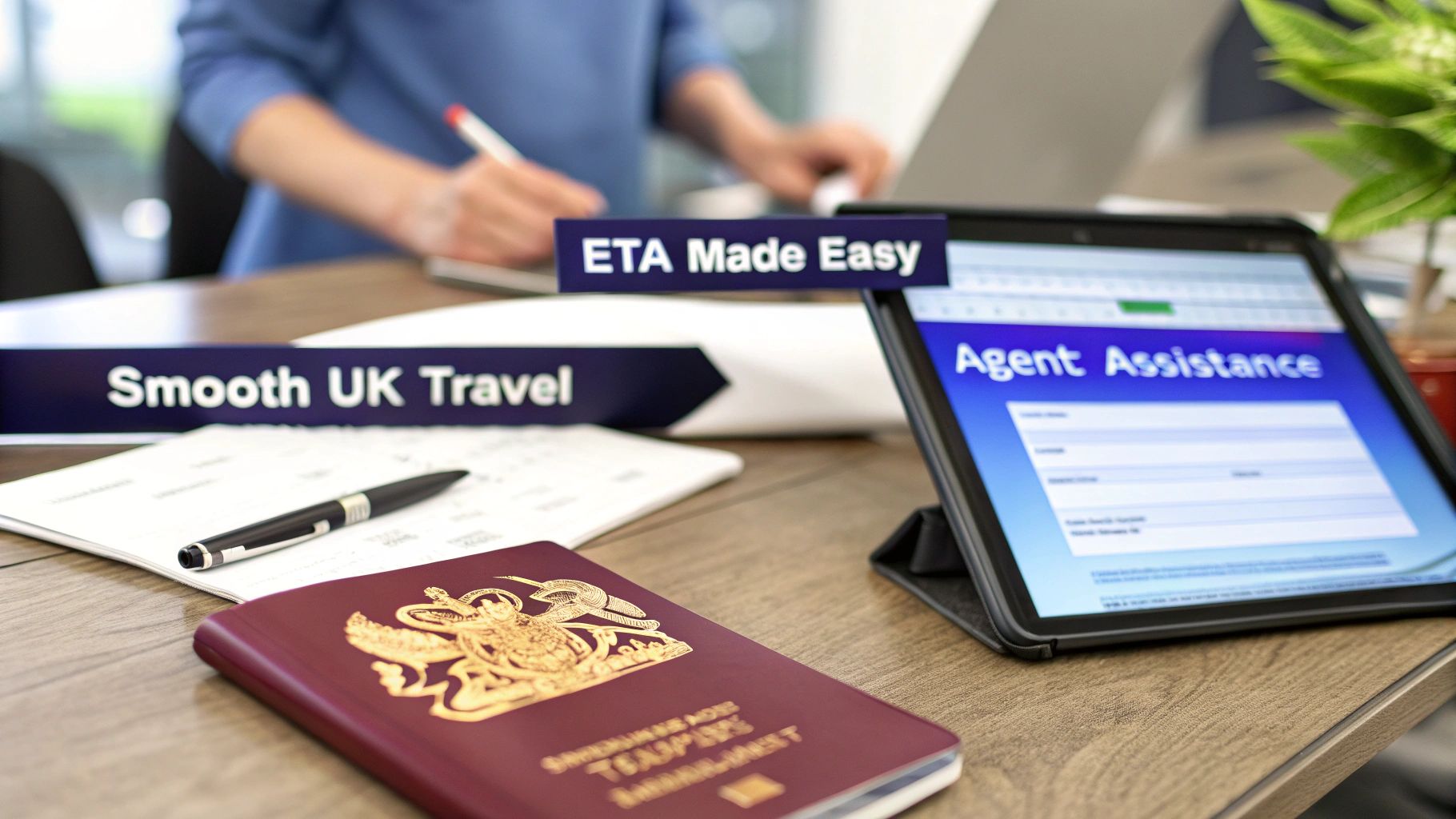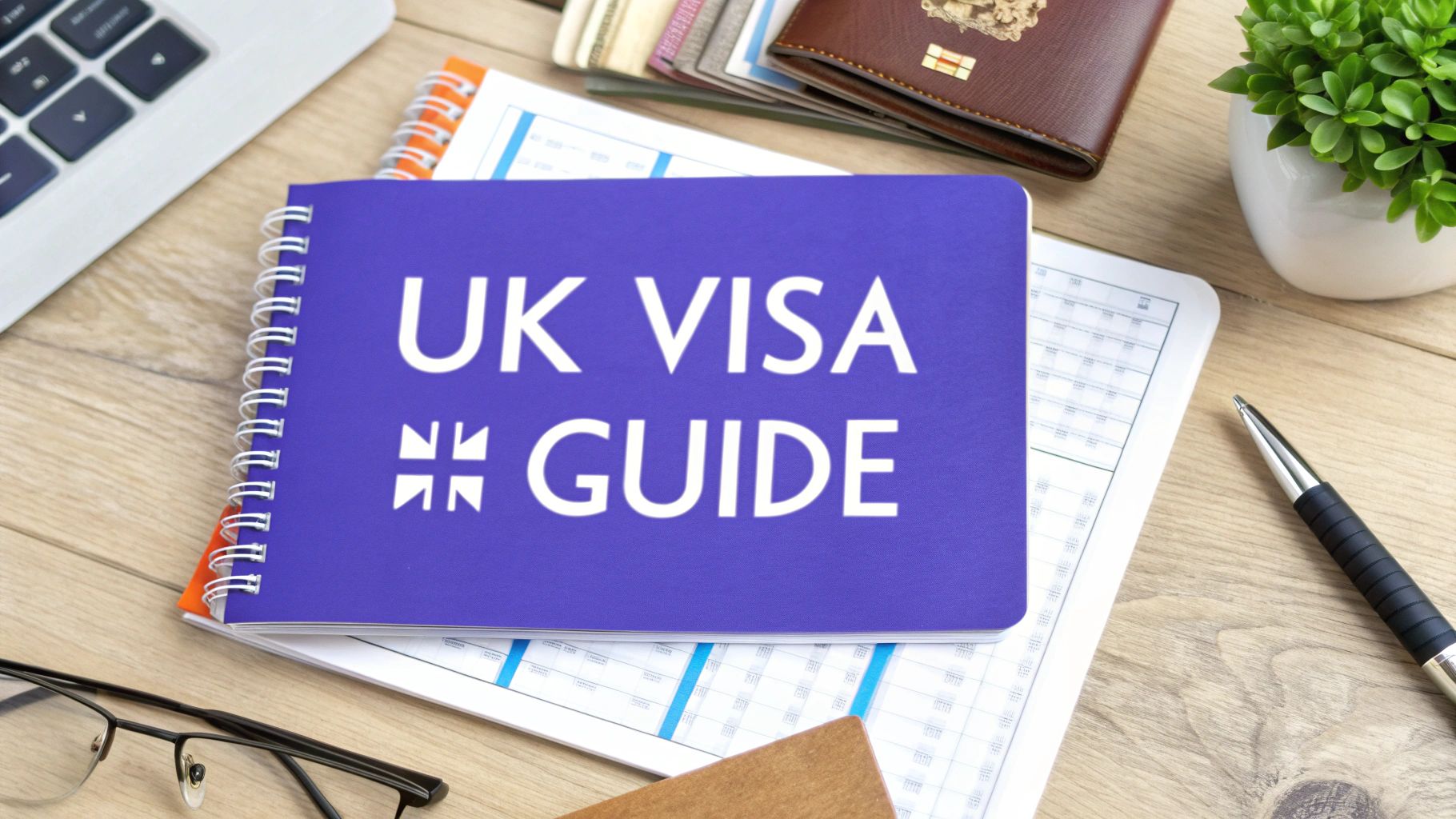
UK Visitor Visa Application Made Simple
Before you start dreaming of London skylines or the rolling hills of the Scottish Highlands, there's a crucial first step: figuring out exactly how you're allowed to enter the UK. The government has two main pathways for short-term visitors, and choosing the right one from the get-go is the key to a stress-free trip.
You'll either need a Standard Visitor Visa or the newer Electronic Travel Authorisation (ETA). Your nationality is the biggest factor here, and getting it wrong can lead to some serious headaches and travel delays. The UK ETA is a new requirement for many travellers, making it essential to understand how it fits into your plans.
Choosing Your Path: UK Visitor Visa vs ETA
So, which one is for you? Let's break it down. The traditional Standard Visitor Visa and the modern, digital UK ETA are designed for different types of travelers. Applying for the right travel authorization for the UK isn't just a suggestion—it's essential.
Who Needs Which Authorisation?
It all comes down to your passport.
The UK ETA is a streamlined digital pass for people from visa-exempt countries. Think of it as a pre-check before you fly. If you're a US or Australian citizen planning a two-week holiday, for example, the UK ETA application is your route.
The Standard Visitor Visa, on the other hand, is a more in-depth application for citizens from countries that require a visa to enter the UK, like India or Nigeria. This process involves more documentation and scrutiny.
Still unsure? This simple chart should clear things up.
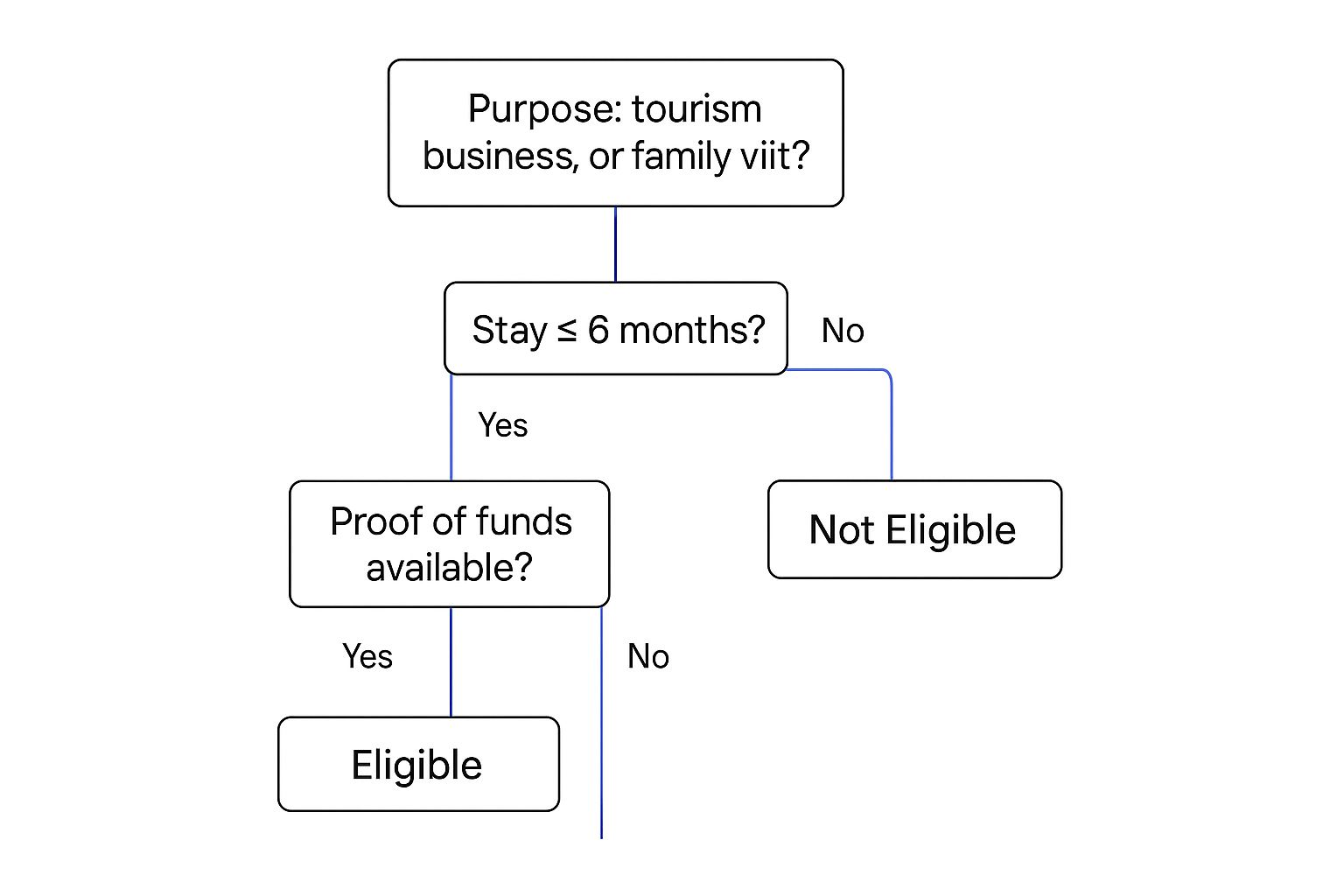
As the infographic shows, it's not just about your passport. Your trip's purpose, how long you plan to stay, and your ability to prove you can support yourself financially all play a part.
UK ETA vs Standard Visitor Visa at a Glance
To make it even clearer, here’s a quick comparison to help you determine which travel authorisation you need for your UK trip.
| Feature | UK ETA (Electronic Travel Authorisation) | Standard Visitor Visa |
|---|---|---|
| Who It's For | Citizens of visa-exempt countries (e.g., USA, Australia, EU) | Citizens of visa-required countries (e.g., India, Nigeria, South Africa) |
| Application | Fully online, quick and simple form | Online form, but requires a visit to a visa application centre |
| Documents | Valid passport, digital photo, travel details | Extensive proof of funds, ties to home country, itinerary, etc. |
| Processing Time | Usually within 3 working days | Can take 3 weeks or longer |
| Cost | £10 | £115 for a standard 6-month visa |
| Best For | Short-term tourism, business trips, or transit | Longer visits, specific purposes, or those not eligible for an ETA |
Ultimately, the ETA is for quick, straightforward trips if you're from an eligible country. For everyone else, the Standard Visitor Visa is the required path.
If you want to dive deeper into the specifics, our detailed guide on the UK visa and ETA systems has all the information you need.
Meeting the Core Eligibility Requirements
Before you even think about filling out forms for a UK visitor visa, it’s vital to get your head around the basic eligibility rules. UK immigration officers are trained to dig deeper than just the paperwork. They’re really trying to answer one main question: are you a "genuine visitor" who will definitely leave the UK when your trip is over? It’s not about just checking boxes; it’s about presenting a convincing story.
The whole application really boils down to proving two key things: that you can pay for your trip, and that you have strong reasons to go back home. These are the two pillars your entire case will be built on.
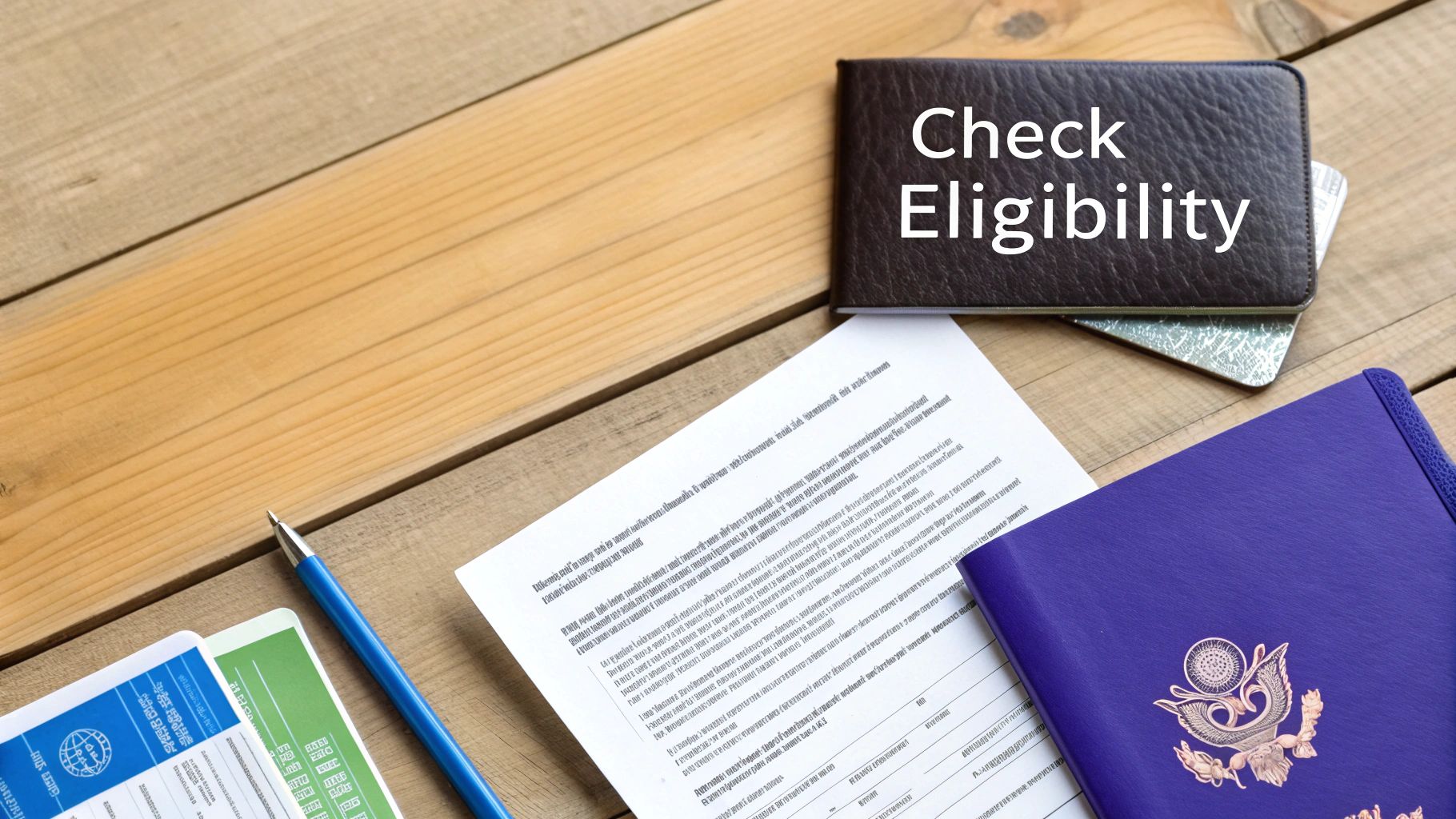
Proving Your Financial Stability
Showing you have enough money is about more than just a single number in your bank account. A big, unexplained deposit right before you apply is a huge red flag for immigration officials. They want to see a clear pattern of financial stability over time.
Key Takeaway: Consistency is far more convincing than a large, last-minute sum of money. Your financial documents should tell a story of responsible saving and spending, proving you can cover your trip without needing to work or rely on public funds in the UK.
Instead of a last-minute cash injection, focus on providing documents that paint the full picture of your financial situation:
- Bank Statements: The last six months of statements are ideal. They should show regular income and a consistent savings habit.
- Payslips: Recent payslips are great for backing up your employment and salary claims.
- Employment Letter: This adds a lot of weight. Get a letter from your employer confirming your job title, salary, and, crucially, that your leave for the trip has been approved.
Demonstrating Strong Ties to Your Home Country
Just as important is proving you have a life waiting for you back home. The immigration officer needs to be completely sure your visit is temporary. A return flight ticket alone isn't going to cut it; you need to show real, tangible commitments.
Think about what truly anchors you to your home country. This could be anything from:
- Family Commitments: Evidence of dependents, like a spouse or children who aren't travelling with you, is very powerful.
- Stable Employment: A permanent job is one of the strongest ties you can have.
- Property Ownership: Owning or even renting a home shows you have a settled life to return to.
- Educational Pursuits: If you're a student, a letter from your university confirming your enrolment and when you're expected back is essential.
Getting these core requirements right is the most critical part of the whole process. If you're looking into the new digital travel authorisation, you'll also need to understand the specific travel to UK visa requirements based on your nationality. Whether you're applying for a traditional visa or a UK ETA, a small oversight can easily lead to frustrating delays or even a refusal.
Preparing Your Essential Application Documents
A strong UK visitor visa application is built on a foundation of clear, organized, and convincing evidence. I always tell my clients to think of their documents as the building blocks of their case—each one needs to be solid and perfectly placed.
Whether you’re getting everything in order for the detailed scrutiny of a Standard Visitor Visa or just gathering the basics for a UK ETA, getting your paperwork right from the start is non-negotiable.
The goal is to paint a complete picture that leaves absolutely no room for doubt in an immigration officer’s mind. This means you need to anticipate their questions and provide the answers upfront through your documentation.
Core Documents for Every Applicant
Every application, no matter how complex, starts with the essentials. These are the items you absolutely must have, forming the core of your submission.
- Valid Passport or Travel Document: Your passport has to be valid for your entire planned stay in the UK. And for a Standard Visitor Visa, it's crucial that it has at least one blank page for the visa stamp.
- Proof of Financial Stability: This is where so many applications stumble. You must prove you can pay for your trip without working or needing public funds.
- Evidence of Accommodation and Travel Plans: You don't need to book non-refundable flights yet, but you should have a clear plan. This includes details of where you’ll be staying and a general outline of your trip.
Showing financial proof isn’t just about having a large sum of money in your account. It’s about demonstrating a consistent, stable financial history. Bank statements from the last six months, recent payslips, and a letter from your employer confirming your salary and approved leave are all incredibly powerful pieces of evidence.
For a deeper dive into what documents will make your application stand out, our guide to the essentials for a UK visa provides a comprehensive checklist.
Transforming Good Evidence into Great Evidence
Once you have the basics covered, certain documents can seriously strengthen your application by giving a much more detailed picture of who you are and why you're visiting. A well-written letter of invitation or solid proof of your ties to your home country can be the difference-maker.
Expert Tip: If a friend or family member in the UK is inviting you, their letter needs to be more than just a quick note. It should confirm their relationship to you, clearly state the purpose and length of your visit, and detail where you will be staying. If they're helping pay for your trip, they must also provide their own financial evidence.
Here are a few other documents that can add significant weight:
- Letter of Invitation: Essential if you’re visiting friends or family.
- Proof of Ties to Your Home Country: This is critical. You need to show you have strong reasons to return home, like a stable job, property you own, family commitments, or being enrolled in university.
- Documents Not in English: Any document that isn't in English or Welsh must come with a certified translation. Don’t skip this—it can lead to an automatic refusal.
Gathering all these documents can feel like a huge task, and one small mistake can put your travel plans at risk. To simplify your UK ETA application and ensure every detail is correct, it’s worth using a trusted third-party application assistance provider.
To simplify your ETA application and increase your chances of approval, consider using AssistEntry — their experts guide you through the entire process, starting from just $79.
How to Tackle the Online Application Form
This is where all your preparation comes together. The online application form can feel like the final exam, and it’s designed to be thorough. But whether you're working through the full visa portal or learning how to apply for a UK ETA, a bit of care and attention to detail will see you through.

The trick is to treat every single box with equal importance. A simple typo in your passport number can be just as damaging as a vague answer about your travel funds. I always tell people to double-check every single entry before clicking to the next page. It’s a simple habit that can save you a world of trouble.
Navigating Tricky Sections
Over the years, I've seen a few parts of the application that consistently trip people up. Knowing where these common pitfalls are ahead of time helps you avoid the simple mistakes that lead to frustrating rejections.
Pay extra close attention here:
- Travel History: Be meticulously honest. You need to list every single country you've visited in the last 10 years. Forgetting a short trip might seem innocent, but to an immigration officer, it can look like you're hiding something.
- Financial Details: Don't be vague. Clearly state how much money you've budgeted for your trip and exactly where it’s coming from. Instead of writing "funds from savings," get specific: "£3,000 from my personal savings account, as shown in my attached bank statements."
- Employment Information: Your job title, salary, and start date must perfectly match the details in your employer's letter and payslips. Any discrepancy, no matter how small, is a huge red flag.
If you're looking for a more detailed breakdown of each question, our guide to the UK ETA application form offers a step-by-step walkthrough that can really help you prepare.
The Value of an Expert Review
Look, even the most careful person can make a mistake. The wording on these forms can be confusing, and the consequences of a small error are surprisingly high. This is exactly why getting a second pair of expert eyes on your application before you hit "submit" is so valuable.
An expert review isn't just about catching typos. It’s about making sure your entire application tells a consistent, credible story to the immigration officials. It’s the difference between just having the right documents and presenting them in the most effective way possible.
A professional can spot issues you might never think of, like an inconsistent travel date buried in your documents or a financial explanation that could be easily misinterpreted.
To make your UK ETA application as smooth as possible and boost your chances of getting it right the first time, consider a trusted service like AssistEntry. Their service, which starts from just $79 (it include government fee, all cost included), includes a full verification of the application before submission, an error-checking and compliance review, and increased chances of approval due to expert handling.
Why an Application Service Is a Smart Choice
Trying to handle a UK visitor visa or ETA application on your own is definitely possible, but the stakes are incredibly high. It’s a stressful process where one tiny overlooked detail or a simple data entry mistake can lead to a flat-out refusal. That kind of rejection can create serious headaches for any future travel plans to the UK.
This is exactly where a third-party application assistance provider becomes a game-changer. Keeping up with the UK's complex and constantly changing immigration rules is a full-time job. Using a professional service means your application isn’t just filled out—it’s thoroughly checked for accuracy and compliance before an immigration officer ever lays eyes on it.
Maximise Your Approval Chances
Let's be honest, the biggest reason to use an expert is to dramatically boost your odds of getting approved. Professional reviewers are trained to spot the common mistakes and potential red flags that most people miss entirely.
Here’s what that looks like in practice:
- Full Application Verification: Every single piece of information you provide is cross-referenced with your supporting documents. No inconsistencies, no questions.
- Error-Checking and Compliance Review: They check your application against the very latest immigration rules, so you don’t get tripped up by an outdated requirement.
- Increased Approval Odds: A clean, professionally reviewed application simply makes a stronger, more credible case to the decision-makers.
When you invest in expert help, you’re not just paying for convenience. You’re buying peace of mind and a much higher chance of success, letting you skip the stress and uncertainty that comes with going it alone.
Navigating a Complex System
The UK's immigration system is notoriously tricky and changes all the time. Just look at the statistical data from 2024-2025—it shows massive shifts in visa volumes thanks to recent policy reforms. These changes have hit everything from visitor and family visas to work visas. For example, dependant sponsorships for students plummeted by 84%, and Health and Care route applications have been all over the place. It all shows just how sensitive and interconnected the system is. You can dig into these recent immigration trends yourself.
If you're still trying to figure out which UK travel authorisation you need, our guide on the various UK visa applications can help clear things up.
To make your UK ETA application simple and avoid any delays, consider using AssistEntry. Their team walks you through the entire process, with services starting at just $79. That price includes the government fee and all other costs, so there are no surprises.
So, you’ve hit the “submit” button on your UK visa application. What now?
That moment can bring a mix of relief and anxiety. But knowing what comes next helps turn that uncertainty into a clear, manageable process.
For anyone who applied for the Standard Visitor Visa, the very next thing you'll do is book an appointment at a visa application centre to provide your biometrics.
This is a mandatory step where officials take your fingerprints and a digital photo. You'll need to bring your passport, the appointment confirmation, and any other documents they've asked for. It's a pretty straightforward process, but absolutely essential.
Understanding the Wait Times
Once your biometrics are in the system, the real waiting game begins. How long you’ll wait really depends on which type of permission you applied for.
- UK ETA Application: This is the fast lane. Most people hear back within 3 working days, and many get an automated approval almost instantly.
- Standard Visitor Visa: This one takes a bit more patience. You're typically looking at around 3 weeks, but that can stretch out during busy travel seasons.
If you've applied for the Standard Visitor Visa, you can usually keep an eye on its progress through the online portal you used to apply. This is your best source for updates as it moves through the system.
Getting the Final Decision
When a decision is made, you’ll be notified by email. If it’s good news, your passport will be returned with a visa sticker (called a vignette) inside, and you're all set to travel.
If your application is refused, you'll get a letter that explains why.
It’s also helpful to understand the bigger picture. The UK's immigration policies are always evolving. For instance, major government reforms in 2024-2025 were introduced to manage immigration numbers after a post-pandemic peak. These changes have led to tighter scrutiny across all visa routes, including visitor applications.
You can get a deeper sense of these policy shifts by reading the government's official publication on restoring control over the immigration system.
Your Top UK Visa Questions Answered
Going through a UK visitor visa application can bring up a lot of questions, and honestly, it's easy to get stressed out by the details. Let's clear up a few of the most common sticking points so you can move forward with confidence.
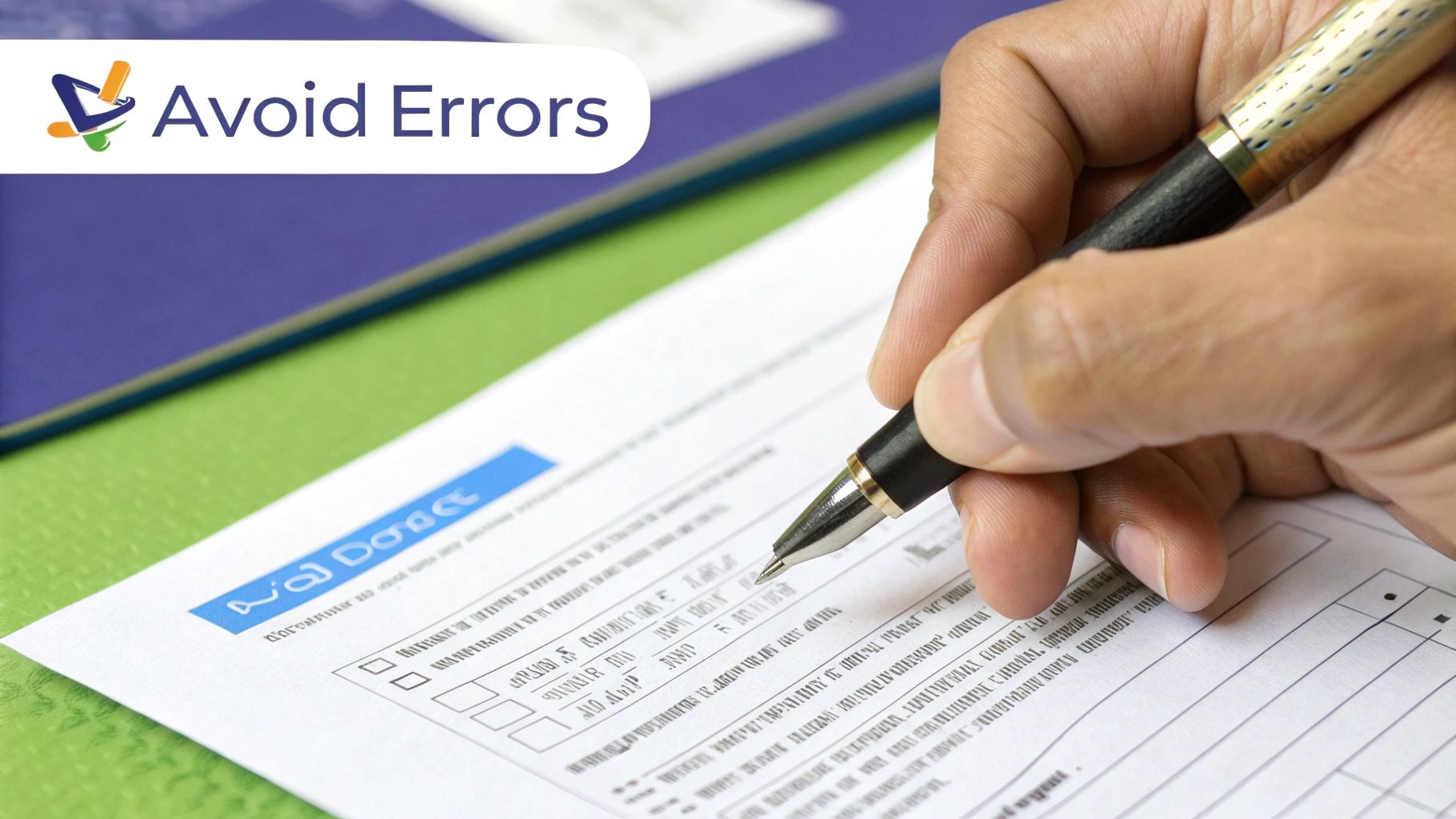
One of the biggest worries I hear about is reapplying after a visa has been refused. The most important thing here is to be upfront about the previous refusal. You absolutely must declare it and then carefully address the exact reasons you were denied. Trying to hide it is a surefire way to get rejected a second time.
Answering Key Concerns
Another common point of confusion is the "sufficient funds" requirement. People always ask, "How much is enough?" The truth is, there's no single magic number. It’s all about showing that you can realistically cover the costs of your trip—flights, accommodation, daily expenses—without wiping out your life savings. Your bank statements and financial proof need to tell a logical story that matches your travel plans.
Finally, what if you want to apply for a new visa while your current one is still active? You can absolutely do that. If your new application is approved, it will simply override the old one. So, there's no need to wait until your current visa expires to start planning your next trip.
Key Insight: Honesty and thorough preparation are your two best friends in this process. Always address any past issues head-on, provide clear financial proof that makes sense, and make sure your entire application presents a consistent, believable story. This approach solves most common problems before they even start.
For those from visa-exempt countries, the process is much simpler with the UK ETA, but being accurate is still vital. Even a small typo on an ETA application can lead to unnecessary delays.
To make your UK ETA application as smooth as possible and boost your approval chances, consider using AssistEntry. Our experts will walk you through the whole process, with services starting at just $79. You can learn more at AssistEntry’s UK ETA page.
